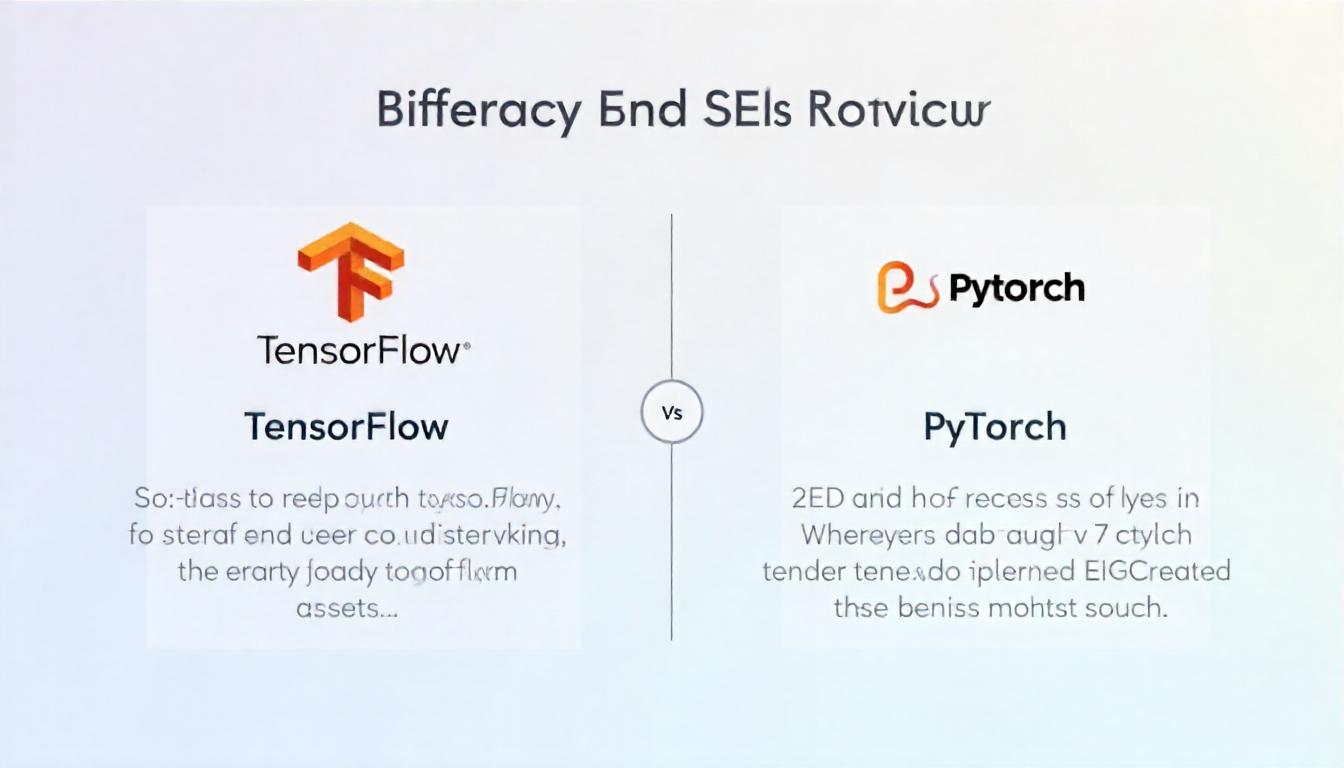AI Development Showdown: TensorFlow vs. PyTorch
Popular AI Frameworks: TensorFlow vs. PyTorch
Artificial Intelligence (AI) has rapidly moved from research labs to everyday applications—powering everything from virtual assistants to medical imaging tools. Behind these innovations lie powerful frameworks that help developers build, train, and deploy AI models. Two of the biggest players in this space are TensorFlow and PyTorch.
Both are open-source, highly capable, and widely trusted in the AI community. But they differ in how they work, who uses them, and where they shine. Let’s explore how TensorFlow and PyTorch compare and help you choose the right one for your next AI project.
Meet TensorFlow and PyTorch
- TensorFlow: Released by Google Brain in 2015, TensorFlow is a comprehensive machine learning platform. It offers everything from building models to deploying them at scale, with strong support for production environments.
- PyTorch: Launched in 2016 by Facebook’s AI Research team (FAIR), PyTorch quickly gained popularity for its simplicity and flexibility. Its dynamic computation approach makes it a favorite for researchers and developers alike.
How Do They Compare?
1. Ease of Use
- PyTorch is often praised for its intuitive and Pythonic feel. Its dynamic graph lets you write and debug code easily, making it perfect for experimentation.
- TensorFlow has improved dramatically since its early days, especially with version 2.x, which simplified many processes. However, it can still feel more complex for beginners.
Best for Simplicity: PyTorch
2. Community and Ecosystem
- TensorFlow offers a vast ecosystem with tools like TensorBoard for visualization, TensorFlow Lite for mobile apps, and TensorFlow Serving for deploying models to production.
- PyTorch boasts a vibrant community, particularly in research. It’s frequently used in academic papers and is becoming more common in commercial projects too.
Winner: It depends—TensorFlow for production features, PyTorch for research and experimentation.
3. Graph Construction
- PyTorch builds computation graphs on the fly during runtime. This “define-by-run” approach offers great flexibility for complex models.
- TensorFlow originally required building static computation graphs, which made it harder to debug. With TensorFlow 2.x, eager execution was introduced, making the framework more dynamic.
Flexibility Leader: PyTorch
4. Deployment and Production
- TensorFlow stands out for deploying AI models at scale. It’s designed with production in mind, offering integrations with cloud services, mobile platforms, and edge devices.
- PyTorch has been catching up with deployment tools like TorchServe and support for ONNX, making it more viable for production use.
Best for Production: TensorFlow
5. Performance
Both frameworks deliver strong performance and support GPUs and other hardware accelerators. TensorFlow’s XLA compiler and PyTorch’s TorchScript are tools designed to optimize models for better speed and efficiency.
Performance Verdict: Often similar—it depends on your specific use case.
When to Use TensorFlow or PyTorch
| Scenario | Recommended Framework |
|---|---|
| Rapid Prototyping | PyTorch |
| Academic Research | PyTorch |
| Large-Scale Production | TensorFlow |
| Mobile or Edge AI | TensorFlow |
| Learning and Experimenting | PyTorch |
Final Thoughts
Both TensorFlow and PyTorch are powerful frameworks capable of tackling complex AI projects. If you’re a researcher or developer looking for flexibility and easy debugging, PyTorch may be the perfect choice. On the other hand, if your goal is deploying models into scalable, production-ready systems, TensorFlow offers unmatched tools and support.
Ultimately, there’s no strict “winner.” Many professionals choose to learn both so they can handle a wide range of projects, from experimental research to enterprise applications.
Whichever you pick, you’ll be working with tools at the forefront of AI innovation.
Share this content:













